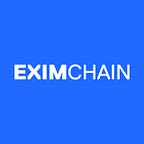Panel Discussion: Recent Developments in Blockchain
New York: On November 16th, Eximchain hosted a panel discussion at Lair East Labs in New York City entitled “Recent Developments in Blockchain and Cryptocurrency.” The event brought together speakers from different vantage points in the blockchain world to comment on industry news and discuss the future.
Samuel Cassatt, Chief Strategy Officer of ConsenSys, opened the session by commenting on some of the big picture applications of blockchain technology. In a space crowded with contentious debates and concerns about the future, Cassatt’s comments were a breath of fresh air. He reminded the audience of the historic nature of blockchain and its ability to transform the lives of people all around the worldwide. One example Cassatt mentioned is the ability of blockchain to bring formal identification and banking to the 2.5 billion people living without these services today.
Juan Huertas, CTO of Eximchain, continued on this theme by discussing how he is using smart contracts to overcome age-old problems in the global supply chain. Issues such as access to credit, supplier reliability, data sharing, and supply chain visibility can all be resolved or mitigated using blockchain technology, Huertas explained. As an example, he described a sourcing application he is building that would allow suppliers to securely share their transaction histories with potential buyers. This “digital reputation” is just one way blockchain can instill trust and create bonds that would have been impossible even a few years ago.
Michelle Staton, Founder of Digital Asset Affairs, provided context on how governments are reacting to these changes. She mentioned that although many governments have imposed regulations on cryptocurrencies, more and more are embracing the underlying technology. She compared the response of China, which has been to heavily regulate the space, with the United States and Singapore, which have been more optimistic, choosing to provide guidelines, room for experimentation, and an opportunity for the industry to mature. Staton also gave the example of the United Nations World Food Programme, which is using blockchain and biometric sensors to handle food distribution for refugee communities.
Overall, the panel painted a very optimistic picture of the future of blockchain and its ability to transform lives in the real world. Eximchain would like to thank all of the speakers for their insights and time as well as everyone who was able to attend for joining the discussion. Keep the conversation going by joining us on Telegram or subscribing to our newsletter.
2017 was certainly a landmark year for both blockchain and cryptocurrency, but what will 2018 look like? We want to hear from you! Email us at Hello@eximchain.com with your thoughts and predictions for blockchain in 2018.
Originally published at medium.com on November 17, 2017.
